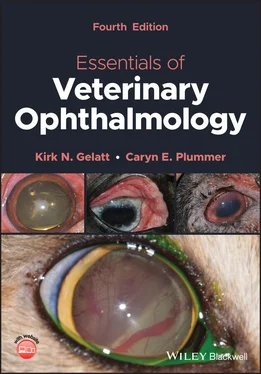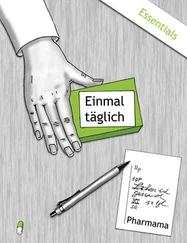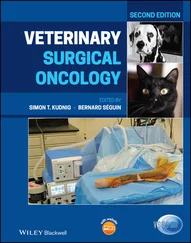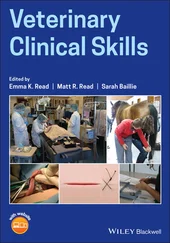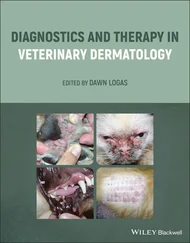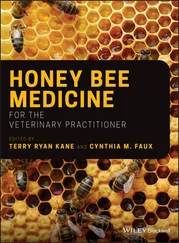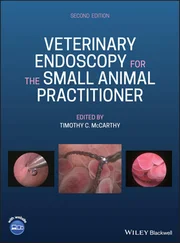1 Cover
2 Title Page Essentials of Veterinary Ophthalmology Fourth Edition Kirk N. Gelatt, VMD Diplomate, American College of Veterinary Ophthalmologists Emeritus Distinguished Professor of Comparative Ophthalmology Department of Small Animal Clinical Sciences College of Veterinary Medicine University of Florida Gainesville, FL, USA Caryn E. Plummer, DVM Diplomate, American College of Veterinary Ophthalmologists Professor of Comparative Ophthalmology Departments of Small and Large Animal Clinical Sciences College of Veterinary Medicine University of Florida Gainesville, FL, USA
3 Copyright page
4 Preface
5 Acknowledgments
6 About the Companion Website
7 Section 1: Basics for Clinical Veterinary Ophthalmology 1 Development and Morphology of the Eye and Adnexa Section I: Development of the Eye and Adnexa Gastrulation and Neurulation Formation of the Optic Vesicle and Optic Cup Lens Formation Vascular Development Development of the Cornea and Anterior Chamber Development of the Iris, Ciliary Body, and Iridocorneal Angle Retina and Optic Nerve Development Sclera, Choroid, and Tapetum Vitreous Optic Nerve Eyelids Extraocular Muscles Section II: Morphology of the Eye and AdnexaIntroduction Orbit Eyelids Conjunctiva Nictitating Membrane Lacrimal and Nasolacrimal System Globe Cornea Sclera Uvea Lens Vitreous Retina Optic Nerve Vasculature of the Eye and Orbit 2 Ophthalmic Physiology and Vision Section I: Physiology of the Eye Anterior Eye Structures Tear Production and Drainage Cornea Iris and Pupil Nutrition of Intraocular Tissues Ocular Circulation Ocular Barriers Aqueous Humor and Intraocular Pressure Lens Vitreous Ocular Mobility Oculocardiac Reflex Section II: Optics and Physiology of VisionIntroduction Visual Optics Visual Processing: Photoreceptors to Cortex Section III: Vision Scotopic and Photopic Vision Flicker Detection Motion Perception Visual Fields, Binocular Vision, and Depth Perception Color Vision 3 Ocular Pharmacology and Therapeutics Section I: Ocular Drug Delivery Barriers to Ocular Drug Delivery Topical Administration Periocular Administration Intraocular Administration Sustained Drug Delivery to Intraocular Tissues Systemic Administration Other Methods of Ocular Drug Delivery Antibacterial, Antifungal, and Antiviral Agents Antiviral Agents Anti‐inflammatory Agents Mydriatics/Cycloplegics, Anesthetics, and Tear Substitutes and Stimulators
8 Section 2: Ocular Exam and Imaging 4 Eye Examination and Diagnostics History General Ocular Examination Ophthalmic Examination in Ambient Lighting Ophthalmic Examination Techniques Ophthalmic Diagnostic Procedures Ocular Imaging: Basic and Advanced Diagnostics Ophthalmic Imaging by Ultrasonography Electrodiagnostic Evaluation of Vision Ophthalmic Genetics and DNA Testing
9 Section 3: Canine Ophthalmology 5 Canine Orbit: Disease and Surgery Clinical Signs/Examination Ancillary Diagnostic Tests Congenital Anomalies of the Orbit and Globe Exophthalmos Acquired Orbital Diseases Surgery of the Globe and Orbit 6 Canine Eyelids Introduction Structure and Function Diagnostics for Eyelids Principles of Lid Surgery Congenital and Presumed Heredity Structural Abnormalities Distichiasis and Conjunctival Ectopic Cilia Entropion Lid Trauma Inflammations Eyelid Masses and Neoplasia Reconstructive Blepharoplasty Other Eyelid Procedures 7 Canine Nasolacrimal and Lacrimal Systems Section I: Nasolacrimal Duct System Embryology Anatomy Physiology Clinical Manifestations of Nasolacrimal Disease Diagnostic Procedures Congenital Diseases Developmental Disorders Section II: Lacrimal Secretory System: Disease and Surgery Formation and Dynamics of Tear Components Pathogenesis of Tear Film Disease Qualitative Abnormalities Treatment of Tear Film Deficiencies Cysts and Neoplasms of the Lacrimal Secretory System 8 Canine Conjunctivae and Nictitating Membrane Conjunctiva Functional Anatomy and Physiology Microscopic Anatomy Vascular Supply and Innervation Normal Bacterial and Fungal Flora General Response to Disease Infectious Conjunctivitis Noninfectious Conjunctivitis Conjunctivitis Associated with Tear Deficiencies Ligneous Conjunctivitis Conjunctival Neoplasia Non‐neoplastic Conjunctival Masses Conjunctival Hemorrhages Foreign Bodies Orbital Disease Anatomical Abnormalities Conjunctival Manifestations of Systemic Disease Effects of Radiation Surgical Procedures Nictitating Membrane Anatomy, Histology, and Function Anomalous, Congenital, and Developmental Disorders Protrusion Neoplasia Inflammatory Conditions Trauma, Reconstruction, and Foreign Bodies Nictitating Membrane Surgery 9 Canine Cornea and Sclera Corneal Anatomy and Pathophysiology Developmental Abnormalities and Congenital Diseases Inflammatory Keratopathies Non‐inflammatory Keratopathies Corneoscleral Masses and Neoplasms Scleral Diseases 10 The Canine Glaucomas Epidemiology of Primary and Secondary Glaucomas in the Dog Classification of the Glaucomas Diagnostics Provocative Tests Clinical and Pathological Effects of Elevated IOP Clinical Signs Primary and Breed‐Predisposed Canine Glaucomas Inheritance of the Canine Glaucomas Clinical Stages of the Primary Glaucomas Secondary Glaucomas Lens and the Glaucomas Aphakic and Pseudophakic Glaucomas Malignant Glaucoma (Aqueous Misdirection) Traumatic Glaucomas Uveitic Glaucomas Ocular Melanosis and Melanocytic Glaucoma Pigmentary and Cystic Glaucoma Intraocular Neoplasms and Glaucoma Glaucomas Secondary to Silicone Oil and Rhegmatogenous Retinal Detachments Congenital Glaucomas Medical and Surgical Treatment Target, Safe, and Diurnal IOP Medical Therapy for IOP Control Patient Selection for Glaucoma Surgery Available Surgical Procedures Preoperative Treatment Current Strategies for Surgical Treatments Cyclodestructive Techniques Treatment of End‐Stage Primary Glaucomas 11 Canine Anterior Uvea Developmental Conditions Degenerative Iridal Changes Uveal Inflammation Uveal Manifestations of Selected Diseases Miscellaneous Uveal Trauma Hyphema Non‐neoplastic Iridal ProliferationsOcular Melanosis (Pigmentary Glaucoma) Anterior Uveal Tumors Uveal Surgery 12 Canine Cataracts, Lens Luxations, and Surgery Section I: Cataracts – Clinical Findings Normal Findings by Age Congenital Lens Abnormalities Lens Coloboma Embryonic Vascular Abnormalities Section II: Cataract Surgery Patient Selection Spontaneous Lens Capsule Rupture 13 Diseases and Surgery of the Canine Posterior Segment Section I: Diseases and Surgery of the Canine Vitreous Development and Anatomy Morphology Diagnostic Procedures Therapeutic Procedures Vitreal Diseases Vitreous in Relation to Other Ophthalmic Disorders Section II: Diseases of the Canine Ocular Fundus Methods of Examination Structural Visualization of the Fundus Functional Testing of the Retina Normal Ocular Fundus Development of the Canine Ocular Fundus Developmental Anomalies Inherited Retinal Degenerations/Dystrophies Late‐Onset PhotoreceptorDegenerations Other Generalized Retinopathies/Retinal Dystrophies RPE Autofluorescent Inclusion Epitheliopathy/Retinal Pigment Epithelial Dystrophy Inflammation and Infections Affecting the Ocular Fundus Retinal Toxicities Retinopathies of Nutritional Causes Vascular Disease Processes Retinopathies with Immunological Diseases Secondary Retinal Degenerations Retinal Detachments Neoplastic and Proliferative Conditions Section III: Surgery of the Canine Posterior Segment Anatomical Considerations Types of Retinal Detachments Factors Responsible for Retinal Detachment Prophylactic Retinopexy Surgical Procedures for Treatment of Retinal Detachment Success of Retinal Detachment Repair Subretinal Injection Section IV: Optic NerveDiseases of the Canine Optic Nerve Structure and Function of the Optic Nerve Clinical Examination of the Optic Nerve Diagnostic Imaging in Optic Nerve Disease Optic Nerve Disorders: Congenital Optic Neuropathies Acquired Optic Neuropathies
Читать дальше
